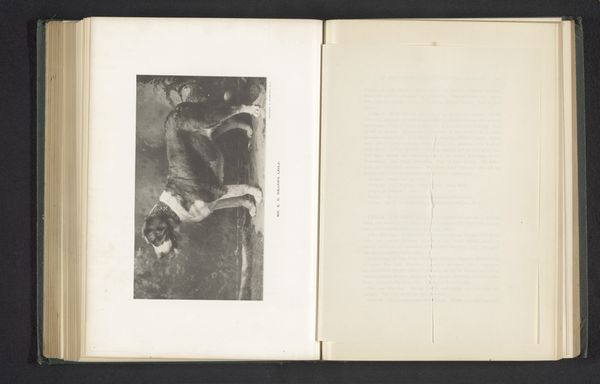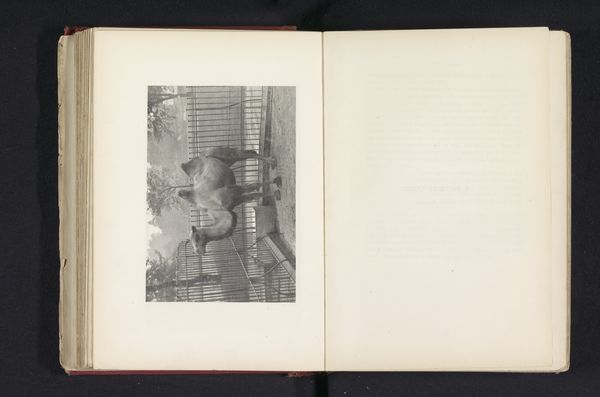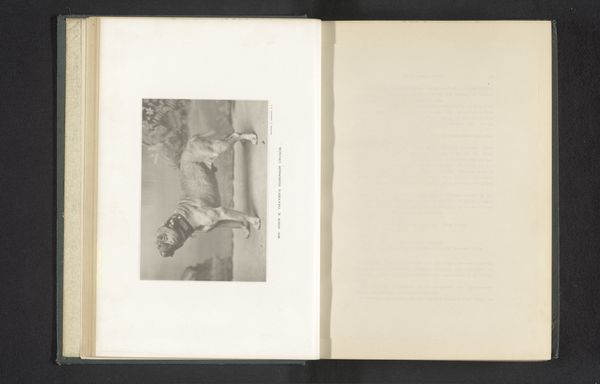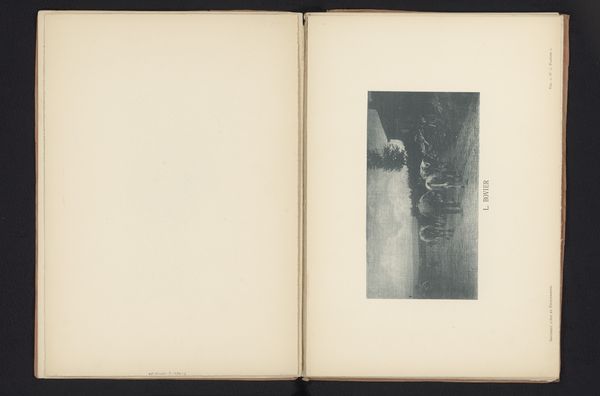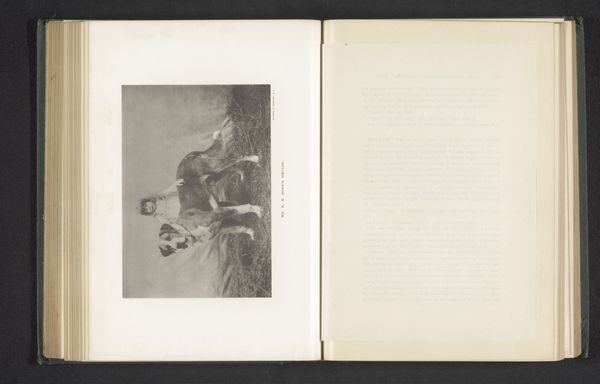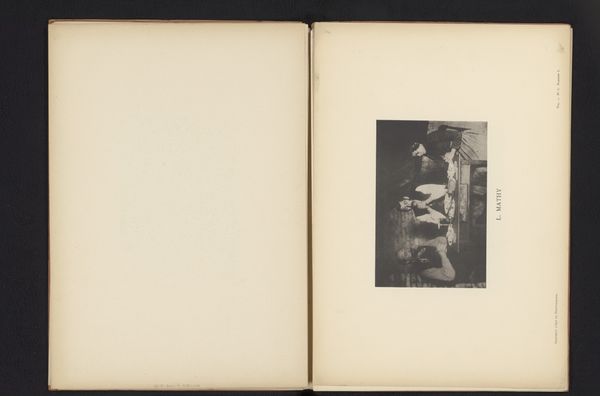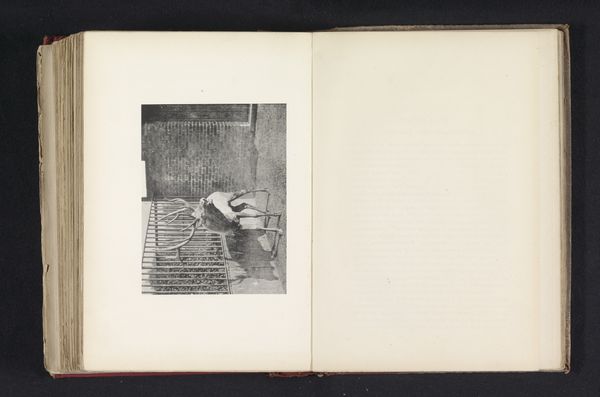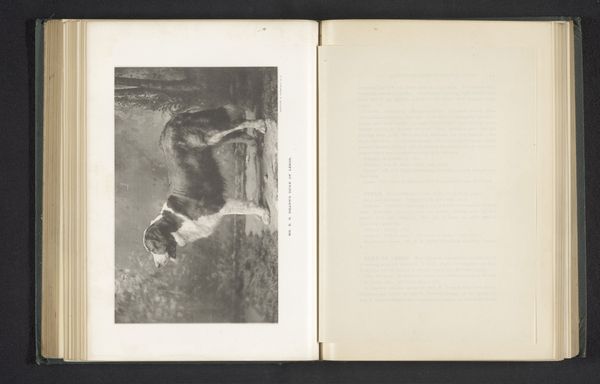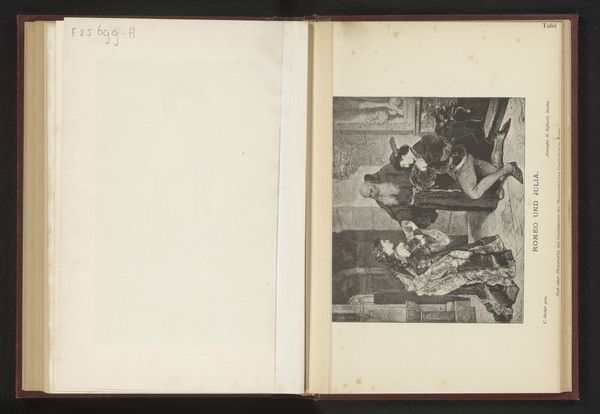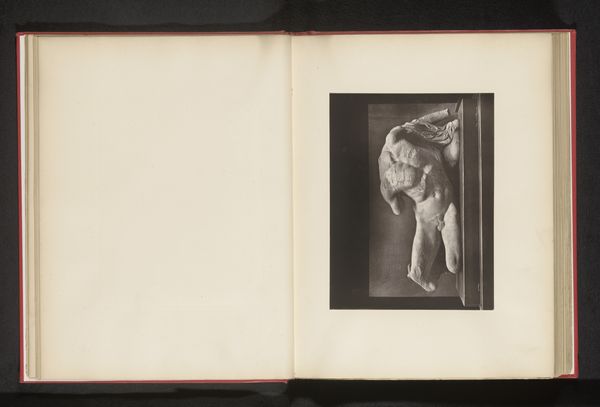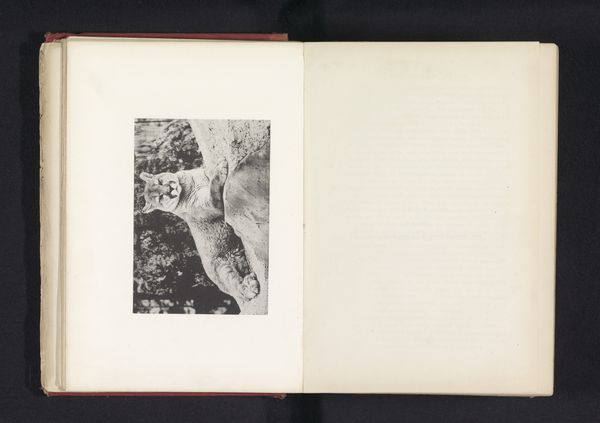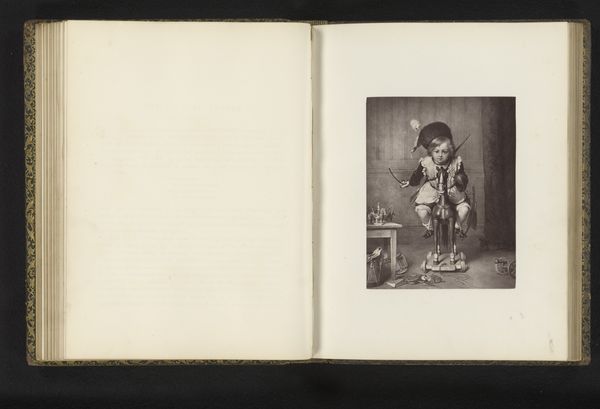
Fotoreproductie van een prent naar het schilderij A Distinguished Member of the Humane Society door Edwin Henry Landseer before 1874
0:00
0:00
print, paper, photography, gelatin-silver-print
#
portrait
# print
#
dog
#
paper
#
photography
#
gelatin-silver-print
#
genre-painting
#
paper medium
Dimensions: height 118 mm, width 159 mm
Copyright: Rijks Museum: Open Domain
Editor: This gelatin-silver print, titled "Fotoreproductie van een prent naar het schilderij A Distinguished Member of the Humane Society door Edwin Henry Landseer", dates from before 1874. I find the depiction of the dog both charming and slightly unsettling, its gaze is very direct. What do you see in this piece, especially considering its title? Curator: The title is key here. The Royal Humane Society, founded in the late 18th century, awarded medals for saving human lives. By the Victorian era, dogs, particularly Newfoundland's, were romanticized as symbols of loyalty and bravery, frequently rescuing people from drowning. What does it mean to depict this dog, implicitly a rescuer, as a "distinguished member?" It challenges our notions of personhood and status. Is Landseer subtly critiquing Victorian social hierarchies, perhaps suggesting that innate virtue transcends societal rank? Editor: That’s interesting! I hadn't considered that. So you're saying it's not just a sentimental image of a dog, but potentially a commentary on class and value? Curator: Precisely. Consider how the popular perception of animals during that era became intertwined with ideals of social reform. Reformers used the qualities associated with animals – faithfulness, diligence – to promote their own views on how humans ought to behave, therefore making the comparison inescapable. This print, made from a painting, enters a cycle of reproduction. What audience are these reproductions meant for, and how does that affect the image’s social impact? Editor: I guess mass reproduction would make the image accessible to a wider audience, furthering its message, whether intentional or not. Curator: Exactly! Reflecting on the image and these ideas together highlights the social work still left to do today in response to the rise of human exceptionalism, don't you think? Editor: I certainly do. It’s amazing how much can be unpacked from what I initially thought was just a simple dog portrait. Curator: These layered interpretations are always possible when approaching images with social awareness!
Comments
No comments
Be the first to comment and join the conversation on the ultimate creative platform.
